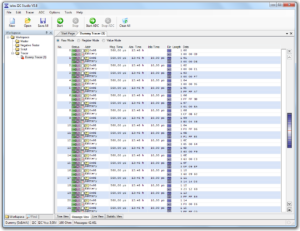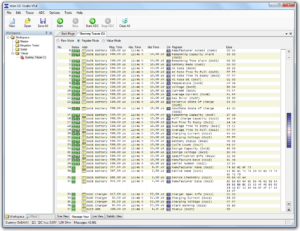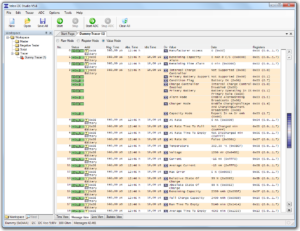Tracer Message View
I2C Studio offers a detailed view of all messages transferred over an I2C bus/SMBus. There are different views to display them:
Raw View
Each line of the Message View displays a single I2C message. The following information is shown:
- message number
- status: ok, error
- speed: full-speed, high-speed
- START/STOP conditions available
- I2C address (7- and 10-bit addresses) and alias name
- time: absolute, idle, message
- direction: transmit (TX), receive (RX)
- message length
- raw data of the transfer
- SMBus power on/off
Register View
When debugging complex problems it is very difficult and time-consuming to compare the transferred with the expected raw data according to the datasheets of the ICs under testing.
In order to present the transferred data in a format that is easier to understand for humans, telos developed the I2C Register Description (IRD) formatting language for I2C Studio.
Defining your own IRD rules for the registers, I2C Studio can interpret and display the raw data in a higher-level Register View showing the semantics of the transferred data for an IC. For example, if I2C Studio is connected to an external temperature sensor and transmits the bytes “0x00 0x03 0x40”, an appropriate IRD rule may interpret and displays it as the named sensor parameter “External Temperature” set to a certain measurement value.
Value View
The Value View offers an even more abstract view of the I2C/SMBus messages. Similar to the Register View it uses IRD files to describe the byte value mapping of ICs under test.
For example, the transferred raw data of the previous example gets displayed as a string value containing “30.52° Celcius”.
Features
Other important features of the Message View are:
- copy to clipboard (HTML, CSV, ASCII)
- export to file (HTML, CSV, ASCII)
- each column can be disabled/enabled separately
- absolute time can be configured: short, complete, relative format
- navigate to a message at a specific position








